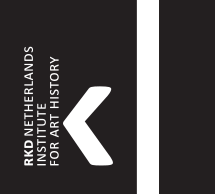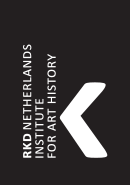Samuel van Hoogstraten: Painting the Visible World
Leonore van Sloten and David de Witt
Samuel van Hoogstraten (1627-1678) was a man of many talents – painting, drawing, printmaking, and writing - but the focus of his professional life was painting. Of all the artistic disciplines, he considered only painting to have the power to faithfully depict the visible world, and to this notion he dedicated his treatise of 1678, Introduction to the Academy of Painting; or, The Visible World. Van Hoogstraten devoted the most energy and attention to this part of his art, to judge by the surviving works. There, at present, we are not on solid ground: his painted oeuvre calls for review and a definitive catalogue raisonné. It was only in 1984 that Werner Sumowski first brought together a substantial number of works attributed to Van Hoogstraten. In the second volume of his Gemälde der Rembrandtschüler he presented just over eighty paintings, most of them with full-page illustrations.1 The two addenda volumes of 1990 and 1994, brought nearly twenty further works into consideration.2 For the series, and its Herculean task of assigning over 2500 Rembrandt school paintings to various pupils and followers, Sumowski did not claim the final word on each and every attribution: he fully envisaged review and correction of his proposals in future, more focused studies on individual pupils and followers of Rembrandt (1606-1669). In the present study, around twenty of his attributions are not supported.
Sumowski’s volumes were complemented by a very useful publication on the artist by Michiel Roscam Abbing, presenting Van Hoogstraten’s extant signed paintings, including several works not caught by Sumowski, along with the documents related to his biography and work.3 Not long after, in 1995, came Celeste Brusati’s major comprehensive study of the artist.4 Not only did Brusati give Van Hoogstraten his due by demonstrating the scope and significance of his work and thought, she also presented a well-organized checklist of paintings that incorporated the very substantial holdings of documentation of the RKD - Netherlands Institute for Art History. These included purely textual references to artworks, many of which did not appear in Sumowski’s volumes. Two further overview studies followed, the first by Hans-Jörg Czech, which discussed many paintings, mainly in service of a discussion of Van Hoogstraten’s treatise.5 The second study was by Jan Blanc, and likewise focused on the Introduction, but went further in linking Van Hoogstraten’s ideas and instructions to his artistic oeuvre.6 Also important was the checklist of paintings, drawings, and prints that Blanc included, which added new references, and caught ones that had been missed in previous studies. This list has the benefit of giving an impression of what Van Hoogstraten’s total output may have looked like. But the mixing of purely textual references, including a few very dubious ones, and ones that cannot be verified, with artworks currently available for study, compromises the effectiveness of this overview. The most recent study on Van Hoogstraten, by Thijs Weststeijn, brings the focus back to his treatise and thought, with an important investigation of the artist’s engagement with contemporary, occasionally even radical, rationalist thought.7
The present study aims to bring an intensive critical assessment to all works assigned to Samuel van Hoogstraten, to exclude questionable works from the oeuvre, and so better demonstrate his artistic development, his thinking and priorities, and his artistic contribution and achievement. The scholarly record on Van Hoogstraten remains compromised by the inclusion of many artworks that are not by the artist. This has only become more urgent with time, as these continue to interfere with the ongoing assessment of Van Hoogstraten’s artistic production.
For the present study, not all artworks have been examined first hand, owing to the prohibitive costs of travel. The emergence of high-resolution colour digital photography in recent decades, with vastly improved colour accuracy and stability, has made many paintings much more accessible for research, and facilitates careful side-by-side comparison on a computer screen. In addition, a substantial number of paintings could be studied directly. Fortunately, because Van Hoogstraten left us with many signed paintings, almost all of which are also dated, it was possible to verify attributions on the basis of direct comparison to the secure works of a substantial reference group.
Technical Research
Prior to the present project, and its accompanying exhibitions at the Kunsthistorisches Museum in Vienna and the Rembrandt House Museum in Amsterdam, virtually no technical research had been carried out on paintings under Van Hoogstraten’s name. For the Amsterdam exhibition publication, Erma Hermens and Moorea Hall-Aquitania collaborated with researchers at the Kunsthistorisches Museum, the Art Institute of Chicago, the Dordrechts Museum, the Rembrandt House Museum, and the Hunterian in Glasgow, as well as private conservators, to study the ground layers of 17 paintings by Van Hoogstraten.8 Not only did this research yield insights into Van Hoogstraten’s experiment with ground layers, as discussed in the publication, it also helped to confirm attributions and illuminate links between works, especially the Christ’s Consolation of the Women of Jerusalem in Glasgow and The Resurrection of Christ in Chicago.
Shaping the Oeuvre
The present study identifies a total of 46 paintings that had been attributed to Samuel van Hoogstraten on the basis of images or direct investigation by Sumowski and later scholars, but which can with reasonable certainty be removed from his oeuvre. In some cases, the works can be assigned confidently to other artists. This leaves a current oeuvre of just more than 120 paintings, awaiting addition or correction by future scholars.
Painterly Logic: Works and Developments
A critical catalogue raisonné also provides a basis for following the artist’s path and analysing the motivations, sources and interactions that contributed to their paintings, and to larger shifts and developments in their painted oeuvre. This study on Van Hoogstraten’s painted oeuvre starts with the previously overlooked impact of the work of his father, his first teacher, and moves on to that of his famous second teacher, Rembrandt. From there, we follow his move from one context to another and relate Van Hoogstraten’s responses to local markets and patronage to his ideas and convictions, including the pursuit of honour and fame, and his famous inclination to try outdo specialists in various genres at their own game. A great divide emerges, between illusionistic works and history paintings, and with it a fundamental tension between the artist’s ability and his aims, in embracing the entire visible world.
Notes
1 Sumowski 1983-1994, vol. 2 (1984), pp. 1286-1387.
2 Ibid., vol. 5 (1990), pp. 3102-3103, 3227-3235, vol. 6 (1994), pp. 3714-3716, 3893-3903.
8 Maciesza/Runia 2025, pp. 90-103.

